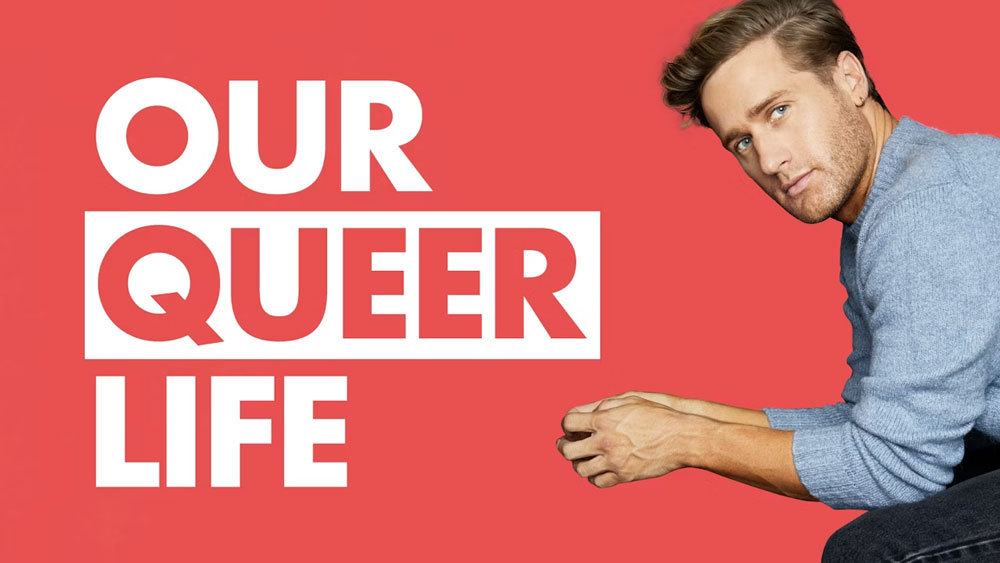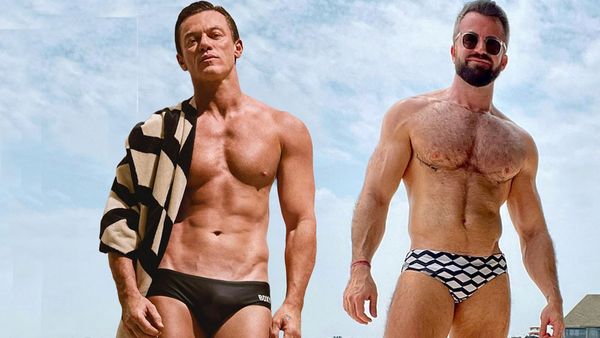October 31, 2015
Gays Take on Halloween
Brian Bromberger READ TIME: 3 MIN.
Grinning jack o' lanterns, witches flying on broomsticks, leering skeletons, creeping black cats, scary ghost stories, ghoulish costumers parading the streets in search of tricks-or-treats: Mention any of these images, and we are transported back to childhood memories of the subversive night called Halloween.
Within the last 40 years, following the lead of queer people, adults have rediscovered Halloween, and this mystical holiday is no longer the province of children.
Almost all our Halloween traditions can be traced back to the ancient Celtic day of Samhain, first day of the new year in the Celtic calendar. Now on Nov. 1, it's the last day of the farmer's year. By that time, all the crops had to be harvested and stored, and the livestock and sheep brought in from distant fields.
This date was both an ending and the beginning of an eternal cycle, the most significant day of the Celtic year. As Jack Santino, a professor of Popular Culture at Bowling Green State University, writes in his book "Halloween and Other Festivals of Death and Life," "The ancient Celts believed that Samhain, the midway point between the old year and the new, was the time when the souls of those who had died during the year traveled into the otherworld. People gathered to sacrifice animals, make offerings of fruits and vegetables, and light bonfires to honor the dead, aid them on their journey home, and keep them (particularly the evil ones) away from the living. If due honor was paid them, the spirits might help them with their magic. During Samhain, all manner of beings were abroad: Ghosts, fairies, and demons, all part of the dark and dread."
Because it was thought that the souls of the dead were roaming over the earth, food and drink were left out to placate them. Later, people dressed as spirits themselves, using mimicry as a magical defense, hoping demons would think they were demons, too, and be frightened away. These traditions are the antecedents of our present masquerading and trick-or-treating. Almost all our Halloween customs were introduced to this country in the 19th century by Irish immigrants who'd fled Ireland after the devastating potato famine of the 1840s.
But it was LGBT people who transformed Halloween into one of our premiere gay holidays, through the Greenwich Village parade in New York and the former Castro Street Halloween celebration. Jack Kugelmass, an associate professor of Anthropology at the University of Wisconsin-Madison, has studied the Greenwich Village parade. He sees this carnivalesque celebration linked to the increasingly public nature of gay culture, offering participants a public license not only to misbehave, but to display oneself and one's vision of the world, even to invent alternative traditions. For many years gay and lesbian people could not regularly crossdress or genderbend, and Halloween became an opportunity for them to express who they wanted to be, often in a campy or satirical manner. On Halloween one could adopt a new identity, however outrageous or flamboyant, but be safely hidden, even closeted. Also, by embracing pagan traditions, LGBT people gently mock religions that have ostracized them.
In Kugelmass' "Masked Culture: The Greenwich Village Halloween Parade," Jeanne Fleming, a former director of the NYC parade, says, "Parades let people see themselves as a performance rather than as machines. It lets them see the imaginative side of Halloween. On the night of Halloween there are no social constraints. Parades allow different groups of people to get together in public. People can be as weird, as sweet, as mean, or whatever. They can look into their craziest mind, their deepest desire, and realize what that is."
Kugelmass sees these gay Halloween events creating a new culture. "For gay people, Halloween is a moment of utopian wishfulness, when their vision of the world has the possibility of moving from periphery to center, and capturing the hearts of an entire city with alternative visions, offering an expansion of the threshold of the sexual self into other domains."
By devising Halloween traditions, gay people affirm creativity, freedom, rebirth, self-expression, self-fulfillment, and enjoying life to the fullest in the face of death. Gay horror author/filmmaker Clive Barker once observed, "If we can somehow play with death, that empowers us and gives us a way to say we're not going to give in. Gay men and women have been incredibly smart in using humor to take the sting out of death."
Santino lauds the achievements of Halloween revelers: "They are challenging, mocking, teasing, and appeasing the dread forces of the night, of the otherworld, of the soul, that becomes our world on this night of reversible possibilities, inverted roles, and transcendent turnarounds. They are reaffirming death and this place as part of life in a dizzying and exhilarating celebration of a holy and magical night."



